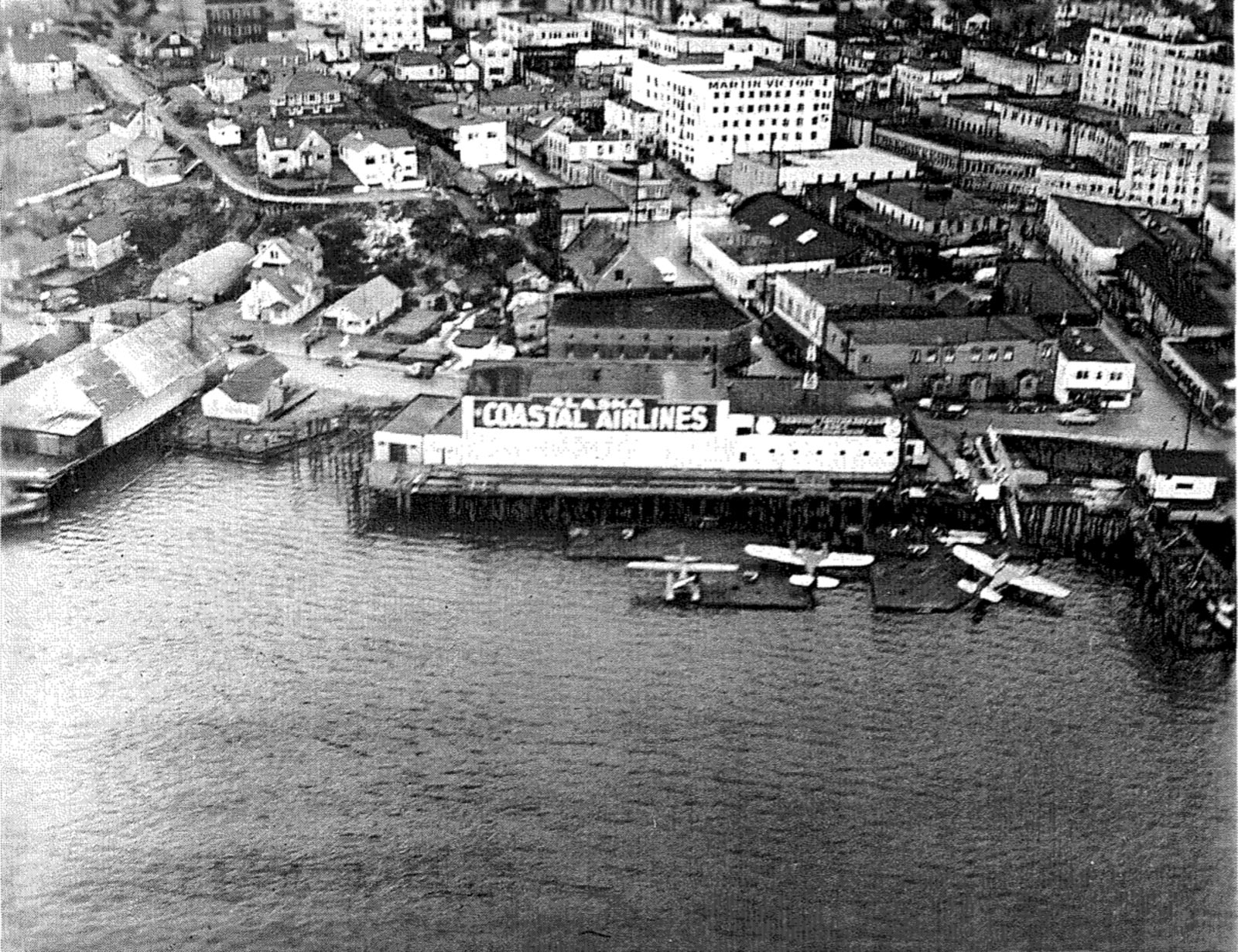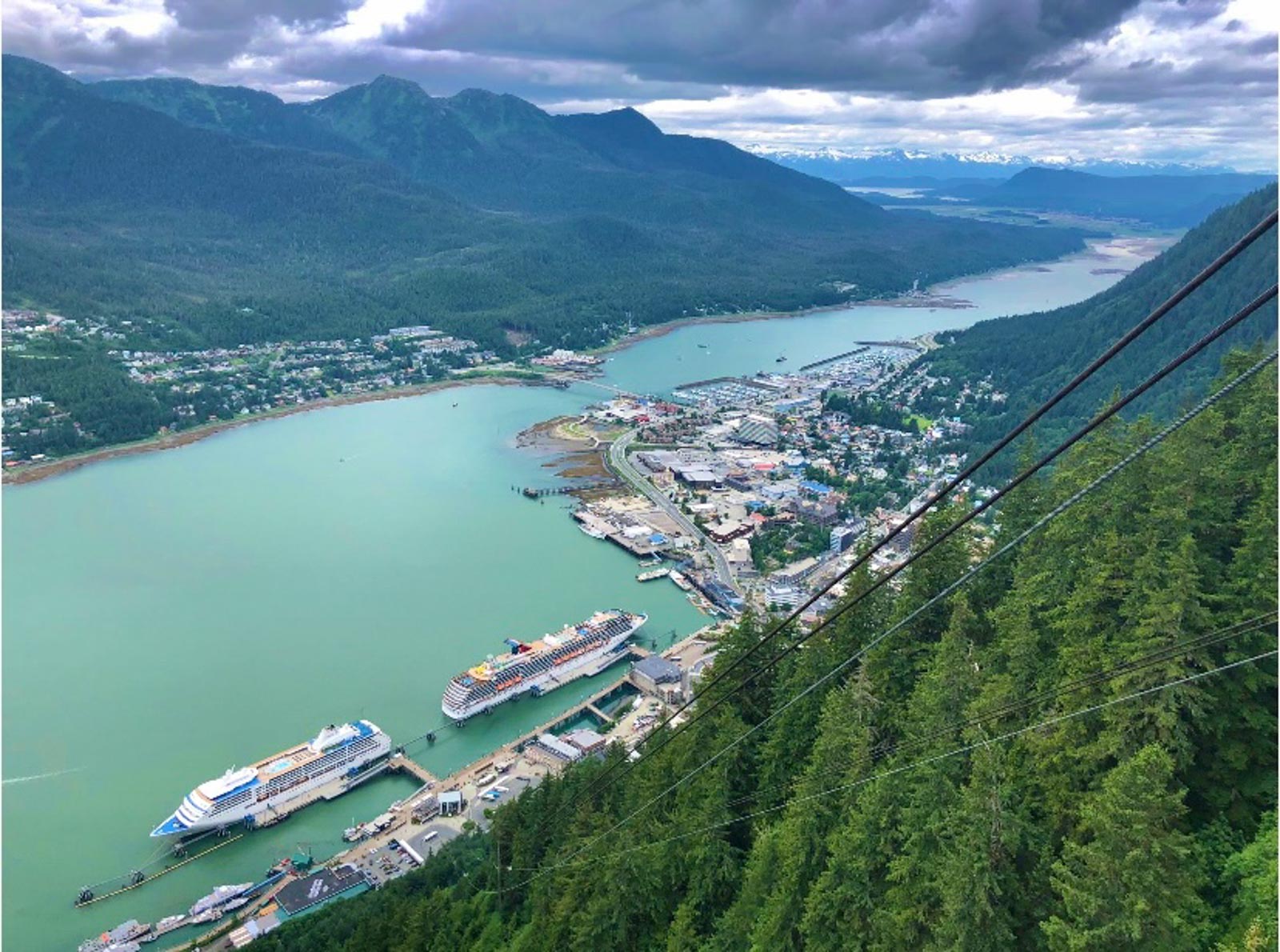Juneau’s History
Juneau’s downtown waterfront has been home to water based aviation since the early 1920’s.
Originally, fishing grounds for local Tlingit Indians, the Gastineau Channel area became the focus of attention in the late 1800’s when a local Tlingit provided the first known gold ore samples to Joe Juneau and Richard Harris.
Shortly thereafter a 160 acre townsite was established filled by the first boatloads of prospectors arriving bound for the new strike on Gastineau Channel.The stampede was on. Juneau grew from a boomtown to a center for large scale hard rock-mining.
On the mainland side of the Channel two great mills were created in the early 1900’s, the Alaska-Juneau at the south end of Juneau and the Alaska-Gastineau at Thane, further south. The opposite side of the channel is the shoreline of Douglas Island, home of the world-renowned Treadwell Gold Mining Company.


Juneau’s Industrial Boom
In the height of the industrial boom an aviation hub was born on the downtown waterfront. Roy Jones was the first man to bring an airplane to Southeast Alaska with the express purpose of starting a commercial airline. With Ketchikan as a home base, operations began the summer of 1922. He flew into Juneau on May 3, 1923 with a salesman from the Hills Brothers Coffee Company and landed at the waterfront. The flight aboard the Curtiss MF called the “Northbird” became the first commercial flight to Juneau.
On April 15, 1929 Anscel Eckmann flying a Lockheed Vega (NC-432E) called the “Juneau” arrived in Juneau non-stop from Lake Union in Seattle, Washington and upon touching down Alaska-Washington Airways was formed. AWA operated a number of Lockheed’s from their home base at Lake Union to Juneau. Their fleet of aircraft was given Alaskan names, the “Wrangell”, “Sitka,” “Skagway,” “Petersburg,” and “Taku.” This great attempt to establish a “class act” airline ended in March 1932 when the Seattle papers carried a notice of receivership. Although the Alaskan portion of the business was financially successful the stateside operation was directly effected by the Depression and other financial strains.
Shell Simmons, an electrician at the Alaska-Juneau Gold Mine had a passion for flying. Simmons flew part time for Panhandle Air Transport, a one-plane operation out of Juneau. After the departure of the main pilot Simmons became the full time pilot flying their Stinson SM2A (NC-452H). When the plane suffered severe storm damage at Kimsham Cove, C. V. McKay, the owner, disgusted with aviation, negotiated with Simmons and sold him the plane for $1.00. With the acquisition aviation in Juneau was here to stay.
Juneau in the 1930’s
In 1935, the Stinson with a new blue and yellow paint job, and a new name, Alaska Air Transport began business in Juneau. Shell soon realized that to make money they would need to offer year round service, he would have to fly the winter months. In 1936, he purchased a Lockheed Vega (NC-47M) from Irving Airways. Then he added a Bellanca Skyrocket that he purchased from the Rockefeller family on the East Coast.
In 1936, Alex Holden started Marine Airways in Juneau and Robert E. “Bob” Ellis started Ellis Air Transport in Ketchikan. They were followed in 1937 with Petersburg Air Service, owned by Tony Schwamm, a former stunt pilot who had starred in “Hells Angels”. Both Ellis and Schwamm started flying into Juneau. All landed at the waterfront seadrome.
In 1939, Alaska Air Transport and Marine Airways merged forming a new company Alaska Coastal Airlines. Alaska Coastal flew during World War II with a number of planes, two Lockheed Vega’s (NC 47M & 49M), a Bellanca Pacemaker (NC-196N), a Curtis Kingbird (NC-622V), a Waco. In 1945, after the war, they purchased their first Grumman Goose, adding several more over the next two years. In 1949 they purchased a Consolidated PBY, the “Catalina.”


Alaska Coastal Airlines
In 1962, Ellis Airlines and Alaska Coastal merged to become Alaska Coastal-Ellis Airlines. They had the largest fleet of Grumman Goose aircraft in the world. In 1968, Alaska Airlines purchased the company opening the seadrome to several organizations, including “Southeast Skyways”, Taku Glacier Air, Alaska Coastal Airlines and the current Wings Airways Inc.

BOOK NOW | 907-586-6275 | INFO@WINGSAIRWAYS.COM